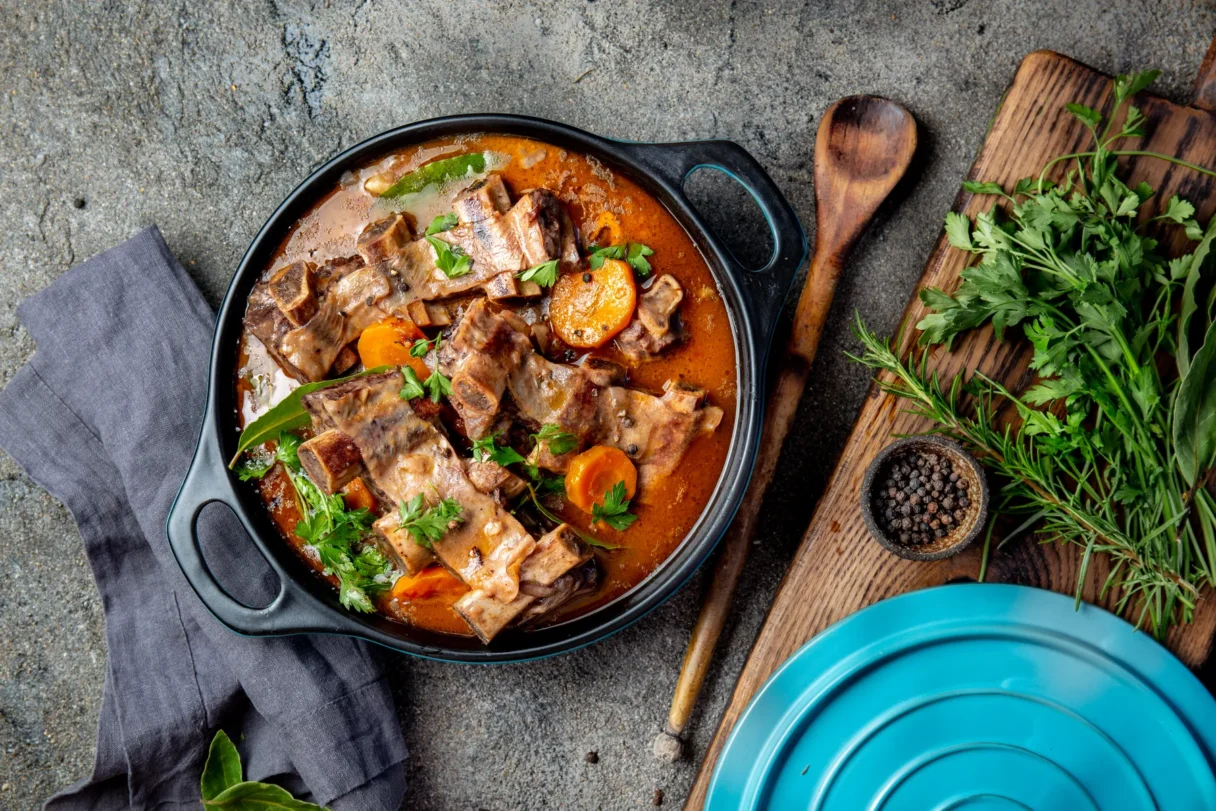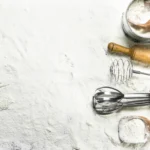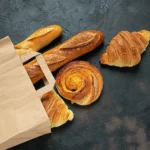
French Cuisine Exploration: Essential Techniques Unveiled
Introduction
Would you like to impart a French influence to your culinary preparations? Do you aspire to prepare delectable dishes inspired by the nation’s renowned cuisine? We agree with you! This blog post will examine fundamental French cuisine techniques that will enhance your culinary abilities with an element of French sophistication. Become an expert in the kitchen by following our tried-and-true methods for creating crusted patés and delicate varieties of crêpe, which include mastering the fundamentals of beurre blanc and roux and learning the how-tos behind these techniques.
Introductory overview of French cuisine and the essential techniques used
Mastering Beurre Blanc:
Traditional French beurre blanc derives its name from the French term for “white butter,” which consists of emulsified butter, vinegar, and white wine reductions. This sauce, distinguished by its piquant and creamy taste, is an adaptable complement to French poultry, fish, and vegetables.
Understanding Roux Basics:
Roux is an indispensable component of French gastronomy. It thickens stews, soups, and sauces. Cooked together, it is a vital but essential mixture of flour and oil that serves as the foundation for various French dishes, including béchamel sauce and coq au vin.
Crafting Crusty Pâtés:
In French gastronomy, paté, a minced meat and fat concoction, is a staple. Typically containing herbs, seasonings, alcohol, and other flavorings, it can be chunky or silky and is composed of various meats. Paté preparation requires the skillful coordination of flavors and the attainment of an ideal crust.
Creating Varieties of Crêpe:
Crêpes, which are narrow, may be stuffed with sweet or savory ingredients. Mastering these techniques entails refining a silky and thin batter, spreading the batter evenly and thinly in the pan, and performing a fast turn to ensure that both sides are cooked to an ideal crispness.
Tips for stocking your pantry with essential French ingredients
Choosing Quality Cheeses:
French cuisine is only possible with an assortment of cheeses. Various cheeses, including piquant Roquefort and Comté, buttery Brie and Camembert, and others, can substantially affect your dishes’ flavor profile. Ensure you only appropriately store fresh, high-quality cheese, which will dramatically affect your dishes’ flavor profile.
Stocking up on Fresh Herbs:
In French cuisine, herbs such as tarragon, parsley, chives, and thyme are indispensable. These herbs are incorporated into stews, roasts, and condiments, among other things. A pantry stocked with fresh herbs can infuse your dishes with flavor and vitality.
Selecting the Right Wine:
In French gastronomy, wine is not merely a consumable but an indispensable component in several dishes. Whether selecting a white wine for beurre blanc or a red wine for coq du vin, wine can enhance the flavor of your dish.
Investing in Quality Butter:
Finally, but certainly not least, is the butter. The French are butter aficionados who employ it liberally in their cuisine. Nevertheless, butter quality is significant. Continuously choose unadulterated butter of superior quality. When using the freshest butter, the flavor of your dishes will be enhanced.
Mastering the basics of knife skills
Holding Your Knife Correctly:
A solid grasp is the cornerstone of proficient knifework. You can use your dominant hand to grasp the knife, ensuring the blade tip is firmly grasped with your thumb and index finger while the remaining three fingers encircle the handle.
Understanding Knife Motion:
A swaying motion should be utilized rather than a straight-down one when performing a cut. This is accomplished by moving the knife’s handle up and down while maintaining the point on the cutting board.
Practicing Different Cuts:
Acquire knowledge and experience in various cutting techniques, including julienne (matchstick-thin slices), dice (cubed cuts), and chiffonade (thinly sliced or shredded foliage vegetables or herbs).
Maintaining Your Knives:
A blunt knife is less hazardous than a keen one because cutting requires more force. Blades that are routinely honed remain keen and effective.
Using the Claw Technique:
To ensure safety while slicing, slide your fingertips under and grasp the food using a claw-like clasp with your knuckles facing the blade. This provides enhanced control and safeguards your digits.
Choosing the Right Knife:
An assortment of blades are optimal for various purposes. Proficiency in distinguishing between different types of knives—chefs, paring, serrated, and so forth—can significantly enhance one’s operational effectiveness and accuracy while preparing meals.
Techniques for sautéing and simmering like a pro
Mastering the Art of Sautéing:
A rapid preparation method utilizing high heat, sautéing allows food to be prepared while maintaining its flavor, color, and texture. Maintaining consistent food motion within the pan is crucial for uniform cooking and avert scorching. Avoid overcrowding a broad, flat pan used for sautéing to maintain the high temperature required for this method. For sautéing, oils with a high combustion point, such as canola, sunflower, or grapeseed oil, are frequently suggested.
Understanding Simmering Basics:
The slow, low-heat culinary method of simmering is ideal for developing the flavors in soups and stews, tenderizing meats, and cooking cereals. Simmering requires a liquid temperature just below boiling, at which point it forms minute, delicate bubbles. Temptation is necessary, as hastening the procedure may lead to undercooked cereals or tough proteins. Bear in mind that a steady and gradual simmer is a partner.
Controlling Heat in Sautéing and Simmering:
Whether simmering or sautéing, it is vital to maintain precise heat. For rapid cooking, sautéing requires high heat, whereas simmering requires low, sluggish heat. Acquaint yourself with the burner’s heat settings, and remember to make necessary adjustments during cooking.
Using the Right Cookware:
Your selected vessel can influence how you simmer or sauté food. A comprehensive, shallow pan is ideal for sautéing, whereas a deep, heavy-bottomed saucepan is most suitable for simmering. The cookware you employ can substantially influence how you achieve the perfect cooking temperature and duration for your dishes.
Knowing When to Stir:
Constant stirring is required during sautéing to ensure uniform heating. On the other hand, when simmering, particularly cereals or specific types of meat, it is frequently preferable to cook with less stirring. Over-stirring can result in the food becoming too mushy and losing its intended texture.
Using herbs and spices to add flavor to dishes
Understanding the Flavors of Herbs and Spices:
Each spice and herb possesses a distinct flavor profile. You must understand these flavors before selecting which to incorporate into your dishes. Basil, for example, is an excellent complement to pasta due to its sweet and piquant flavor, whereas rosemary, with its piney aroma, combines well with roasted meats.
Balancing the Use of Herbs and Spices:
Maintaining equilibrium is crucial when utilizing botanicals and seasonings. Excess excess can overpower a dish, whereas a deficiency of excess can render it tasteless. Begin with a small quantity and modify to flavor.
Knowing When to Add Herbs and Spices:
Adding herbs and seasonings to a dish requires precise timing. Generally, tender herbs such as cilantro and parsley should be incorporated before serving. In contrast, hard herbs like rosemary and thyme should be introduced at the onset of the culinary process.
Using Fresh vs. Dried Herbs:
Fresh herbs have a more robust flavor than desiccated ones; however, they expire more quickly. When fresh herbs are in season, utilize them; however, maintain a supply of dried herbs when unavailable. Substitute one-third of the quantity because desiccated botanicals are more potent than their fresh counterparts.
Storing Herbs and Spices Properly:
If stored correctly, herbs and spices can last longer and maintain their smell and taste. Keep them away from heat and light in containers that won’t let air in. Whole spices can be toasted and ground to get the best taste.
Making Your Spice Blends:
Buying spice mixes that are already made can be easy, but making your own lets you change the flavors to suit your tastes. Try putting different things together to create your unique mixes.
Tips for plating presentation
Color and Contrast:
Use different-colored and textured items to make your dish look good. Pair brightly colored veggies with dark meats or grains to make a plate look good.
Balance and Proportion:
Could you make sure the amounts are the right size for the plate? Each part of the meal should be moderate and take away from the other parts on the plate.
Garnishing:
Use decorations to give the dish a pop of color, improve its taste, or make it stand out. Remember that garnishes should be tasty and complement the meal’s main flavor.
Plate Selection:
The plate is also part of the display. Pick a plate that goes with your dish’s size and color. Remember that the plate is like the frame of a painting: it should add to the picture, not take away from it.
Sauce Application:
Adding sauce to a dish can transform it from simple to fancy. You could use a squeeze bottle for more control or drizzle the sauce around the dish to make it look nicer.
Cleanliness:
Could you clean the plate’s edges? A messy plate can make the meal look less appealing overall.
Layering:
Layering your items will give your dish more height and volume, making it look bigger and more appealing.
Finishing touches – typical sauces used in French cuisine
Béchamel Sauce:
The white sauce Béchamel is made from milk, butter, and flour. It is often used as a base for other sauces and is integral to famous recipes like lasagna, gratin, and croque monsieur.
Hollandaise Sauce:
Hollandaise is an integral part of French food. It is made from egg yolk, melted butter, and lemon juice. People often eat it with eggs Benedict, artichokes, and some fish meals.
Velouté Sauce:
Adding a roux to a light stock makes velouté, another white sauce. It’s often used to make other soups and sauces.
Rouille Sauce:
This spicy sauce uses red chilies, breadcrumbs, garlic, and olive oil. It’s often eaten with bouillabaisse and fish soups.
Pistou Sauce:
Pistou is a garlic, basil, and olive oil sauce that tastes like Italian pesto. In the past, it was often eaten with soups and pasta.
Bearnaise Sauce:
Bearnaise is a type of Hollandaise with tarragon and chervil added to improve its taste. It goes well with steak and other grilled foods.
Aioli Sauce:
This is a thick mayonnaise with garlic. It is used to dip or spread on French sandwiches and goes well with fish and boiled veggies.
Conclusion
As a result, mastering the craft of cuisine necessitates a combination of expertise and comprehension. Achieving proficiency in various cooking methodologies, comprehending the distinct tastes of herbs and seasonings, executing dish presentations with aesthetic appeal, and acquiring the skillful application of condiments can notably elevate one’s culinary endeavors. Irrespective of one’s culinary aspirations or superficial interest in home cooking, the following strategies and recommendations will be invaluable resources throughout one’s culinary expedition. Please remember that cookery is a combination of science and art. Experimentation, learning, and, most importantly, appreciating the process are integral.
Mary Johnson
Mary Johnson loves trying new recipes and teaching others. With years of cooking experience, she creates inspiring, delicious recipes. Her writing combines creativity and pragmatism, making cooking fun and easy for everyone.



